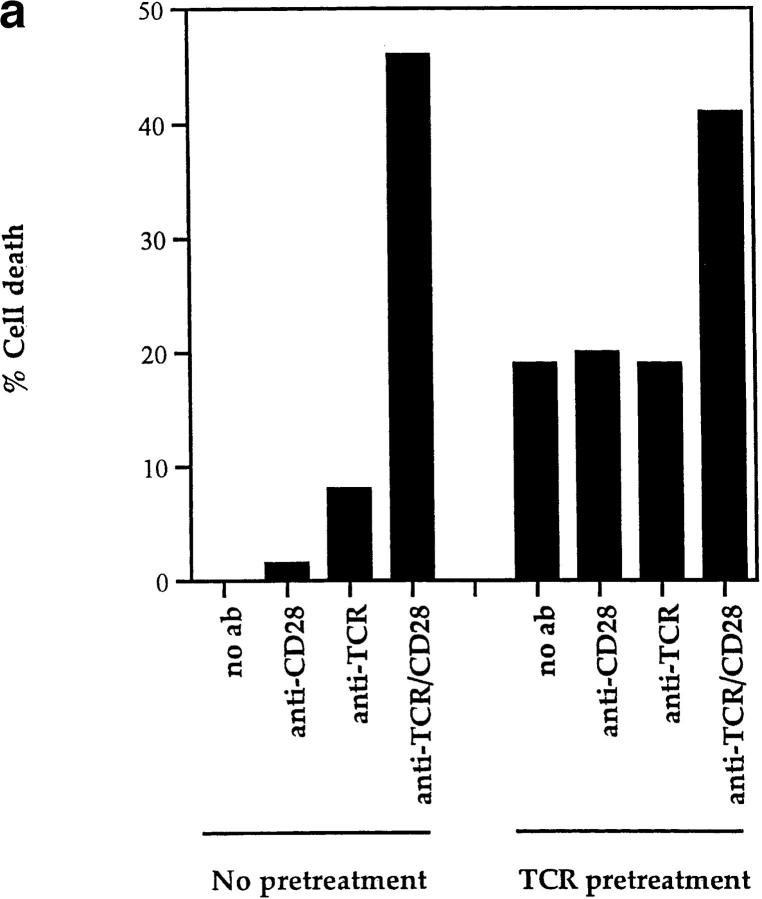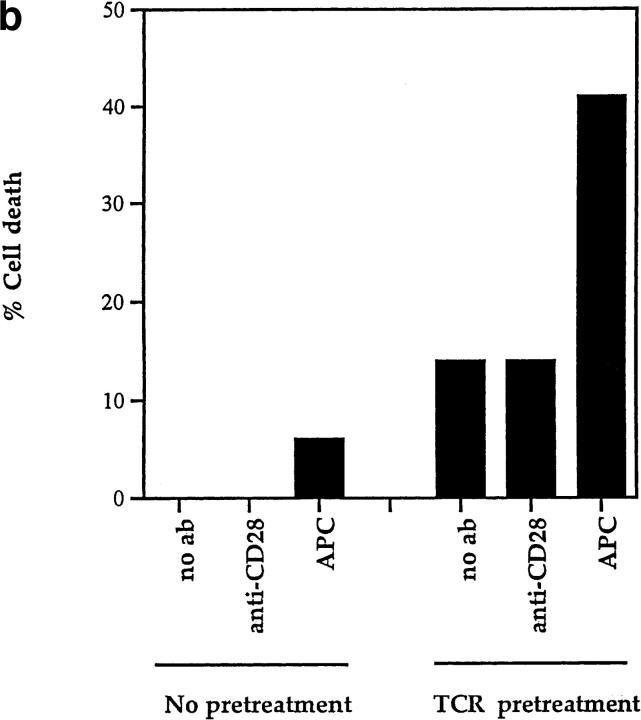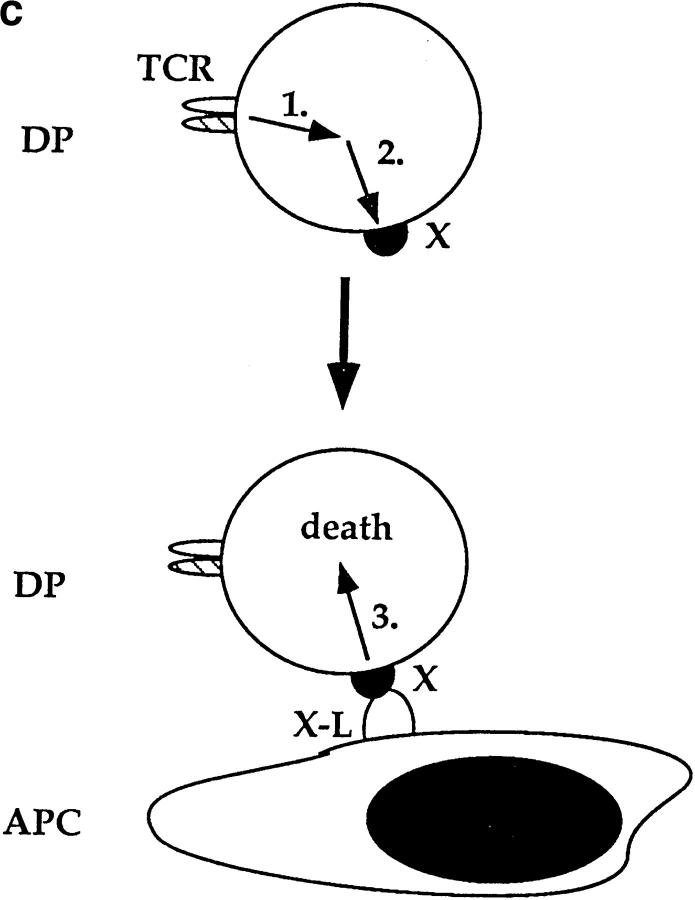Figure 7.
CD28-dependent and CD28-independent mechanisms of DP thymocyte apoptosis are distinct. (a) TCR and CD28 signals must be received simultaneously to mediate death of DP thymocytes. DP thymocytes from B6 mice were prestimulated by platebound anti-TCR-β for 6 h. They were then removed from this stimulus and transferred to wells that had been precoated with the antibodies indicated on the x-axis. Cells were harvested and stained with EtBr. The background cell death observed in TCR pretreated groups is likely due to cell damage inflicted by their physical removal from platebound anti-TCR antibody. (b) TCR and second signals derived from APCs do not have to be simultaneous to induce CD28-independent DP thymocyte death. DP thymocytes from CD28 KO (Ly 5.11) mice were prestimulated by platebound anti–TCR-β for 6 h. They were then removed from this stimulus and transferred either into wells that had been precoated with anti-CD28 or into wells containing APCs from B6 Ly5.2 mice (in a 2:1 ratio with the DP cells). Cells were harvested and stained with both Ly5.1 and EtBr. DP thymocytes were distinguished from APC by expression of Ly5.1. As can be seen, preengagement of TCR on DP thymocytes made them susceptible to APC-induced cell death. (c) Schematic of the CD28-independent mechanism of DP thymocyte apoptosis. This figure illustrates the proposed mechanism by which TCR and subsequent APC signals induce apoptosis of DP thymocytes in a CD28-independent manner. TCR prestimulation of DP thymocytes (1) induces upregulation of a molecule X which might express death domains (2). Subsequent engagement of molecule X with a ligand expressed by APCs (X ligand or X-L) induces apoptosis of only prestimulated DP thymocytes (3).



